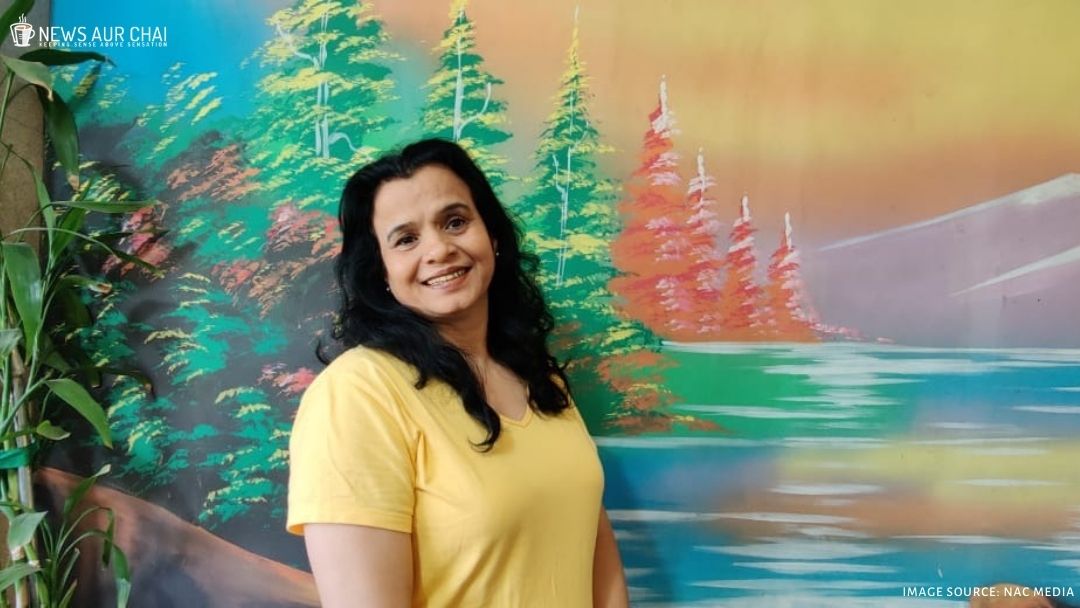Amcha Ghar: Providing A Home For Orphaned Girls

1. Please tell us your journey so far, and what challenges did you face?
Amcha Ghar has been a brainchild of Ms Agatha Susheela. Since she was young as she was on a mission to serve society, she was young and full of zeal to serve the society hence, While working she registered the organization with committed social workers and well-wishers on dated 14th of April, 1996, in a village named Uttan in the city of Bhayander (W), a committed team of social workers, attorneys, doctors, and well-wishers joined Mr and Mrs Dias to give birth to Amcha Ghar. Initially, providing a home to three girls has grown to a place that caters up to 25 girls and is still growing. They have rehabilitated many girls back into society by providing them assistance for higher education, and jobs at reputed companies.
As on date, Amcha Ghar has been a catalyst in creating social impact & contributed towards sustainable development goals (SDG-2, SDG-4, SDG-5, SDG-6, SDG-8 and SDG-17) through its flagship programs. In the last five-year Amcha Ghar has transformed lives of 33,689 beneficiaries.
Amcha Ghar has been working since 1996 and impacted more than 12,543 direct beneficiaries under each of the thematic areas:
1. Nutritional Aid-13,400
2. Access to Quality Education and Gender equality-12,489
3. Improved healthcare, WaSH and Sanitation-9,660
4. Sustainable livelihood through Skills -120
We feel that resource scarcity has been a constant challenge to implement the programs in terms of challenges.
2. What loopholes in the existing socio-economic framework of our society are you trying to cure?
In our opinion, education is the most imperative segment out of different segments of a social foundation. Despite government, NGOs and corporate interventions, there are a series of issues that need attention to ensure that every child has access to quality education. This includes following:
1. Lack of access to quality education
2. Absence of proactive, skill-based and practical learning for children
3. Imbalance gender-based ratio of enrolment in education
4. Malnourishment and hunger in society
We at Amcha Ghar have been putting our efforts together with our dedicated team of experts and resources including infrastructure, science lab, computer lab etc. to resolve the listed issues in a more strategic and organized manner through a series of interventions that we implement Amcha Ghar.
3. Please tell us more about your groundwork (Impact stories)
Since inception, the Organization has directly reached and impacted about 35,669 beneficiaries through different programs and will continue to co-create a larger impact on the ground going forward.
Going forward, Amcha Ghar planning to scale its program offering Children, Youth, Women and Senior Citizen and create impact at scale across India. AG wishes to directly impact about 50,000 beneficiaries through access to education, WaSH, access to sustainable livelihood, rehab interventions of senior citizens and healthcare interventions by March 2025.
Story 1-Empowering Girls to be better citizen and brighter their future
Sristi was only three years old when she came to Amcha Ghar. Her mother was a commercial sex worker, and eventually both her parents lost their lives due to HIV. She was brought to Amcha Ghar for care, protection, and education. She has seen a lot of darkness in her life, losing her mother at such a small age, completely shook her. She is an emotionally sensitive girl and never stopped thinking about her parents.
She grew up with love and care. She was very active in extracurricular activities, such as singing, dancing, card and jewellery making. She always aspired to be a great singing artist. She has completed her IATA course (travel & tourism). Currently, she is finishing her third year of a Bachelor of Arts. , at Mumbai University and is working as a receptionist at a reputed pharmaceutical company. The journey of her life is very remarkable and memorizing.
Story 2 Global pandemic and Amcha Ghar Contribution
A global pandemic has pushed children, women, and adults to go hungry as many of them have lost their employment. As per UNDP’s recent report on hunger, nearly 151 million children under five are still stunted, 1 out of 8 adults are obese, 1 in 3 women in reproductive age is anaemic hence intervention is critical.
A global pandemic has enforced all the world leaders, Government, Civil society organizations and common man to rethink about future and reset instead of just working on short term remedies to address the deeply rooted problems with respects to education, hunger, poverty and unemployment and move towards integrated and inclusive development by adapting mode strategic approach to everything.
As a rehab strategy, Amcha Ghar has provided dry ration to more than 5000 families during lockdown and still continue to support the most affected families in future. Organization also made education accessible for 800+ Children from primary and secondary level supported education of 800 plus children between 1st to 10th Standards.
4. What are your thoughts on the current situation of child labour laws and rights in India, and how do you see the narrative shaping up with the right level of altruism and government interventions
The international community has established a global consensus against child labour through a series of widely-ratified conventions and national laws. The legal framework is in place; however, the magnitude of child labor is huge and hence integrated approach to children’s welfare is critical and need of the hour. According to data from Census 2011, the number of child labourers in India is 10.1 million, of which 5.6 million are boys, and 4.5 million are girls. Hence Government, Civil society’s, corporate and other stakeholders including Destitute homes, CWC and JJB and police system will have to work in collaboration towards, welfare initiatives, advocacy for policy changes and integrate those changes into the program is way forward to build a safe and secure future of these children in India and overseas going forward.
5. Ever since the lockdown, the school dropout rate has increased exponentially, young girls who have stopped their education during this difficult time might never be able to return back to school. How do you think we as a society must mitigate this problem before it snowballs into bigger one?
Well, It’s true, and hence we as civilised society needs to understand the magnitude of the problem and work in collaboration is key to address those problems. While addressing these problems, technology will play a very important role in making the impossible possible for every child to access quality education at his/ her home.
Few companies like MI and others have shown interested under their corporate social responsibility initiative to provide mobile phones to children to access education even during lockdown.
Along with this government, civil society and individual will have to take responsibility and be the catalyst and ensure that every child has access to technology and so as to education.
6. Years of living in destitution can often condition one into a victim mindset, which ironic is still harboured in women despite belonging to the elite class. How can we ensure that girls today have accessibility to all resources and opportunities to become bright leaders of tomorrow
As an organization, we needs to work towards gender balance and educate, empower children Girl child to have access to resource as equal to boys. At school, we do provide them equal opportunities to achieve their dreams and be independent in real sense in the future.
At government-level work around gender budgeting, advocating towards girls’ rights, having specialised schemes to promote girl-child education will be way forward to ensure that Girls are independent in every form.
7. How can we instil the notion of gender equality in young children so that they become more conscious and responsible citizen of the community in future
It’s possible at different levels wherein every stakeholder will have to play a key role in achieving it. Parents will have to ensure equal treatment, resources, and opportunities made available for both siblings without bias at the family level. At the government level, each political party needs to ensure that women will have equal representation in politics. When there is equal and fair representation by women in politics of all forms, there will be more coalition and power while representation the issues around women, issues of girl child for access to school, equal opportunities at the workplace and equal pay.
8. What policy interventions/ amendments or initiatives are required to be set in motion to change the current state of affairs
To identify and address any social problems, all the stakeholders need to integrate their efforts in individual and united capacity to resolve the social issues around us. Following could be key strategies that could be adopted:
1. Strategic collaborations with Government, civil society and society at large, frame policies and programs that ensure the welfare of all children and no bone left behind, Increase government spends on educational reforms and reforms around child labour and destitute children
2. Inclusive education system –One needs to adapt an inclusive education system to ensure every child have access to education
3. Reforms in Policy-As per new education policy; there are provisions of practical and experiential learning needs to be strengthened going forward.
4. More stringent law and its implementation would be key to address major social problems in India
5. Empowerment through Educational investments for all, awareness at different level for stakeholders and advocacy at central, state and district level with government, civil society, corporate and society at large would be key in addressing these social problems more efficiently and effectively for inclusive and sustainable development for all.





